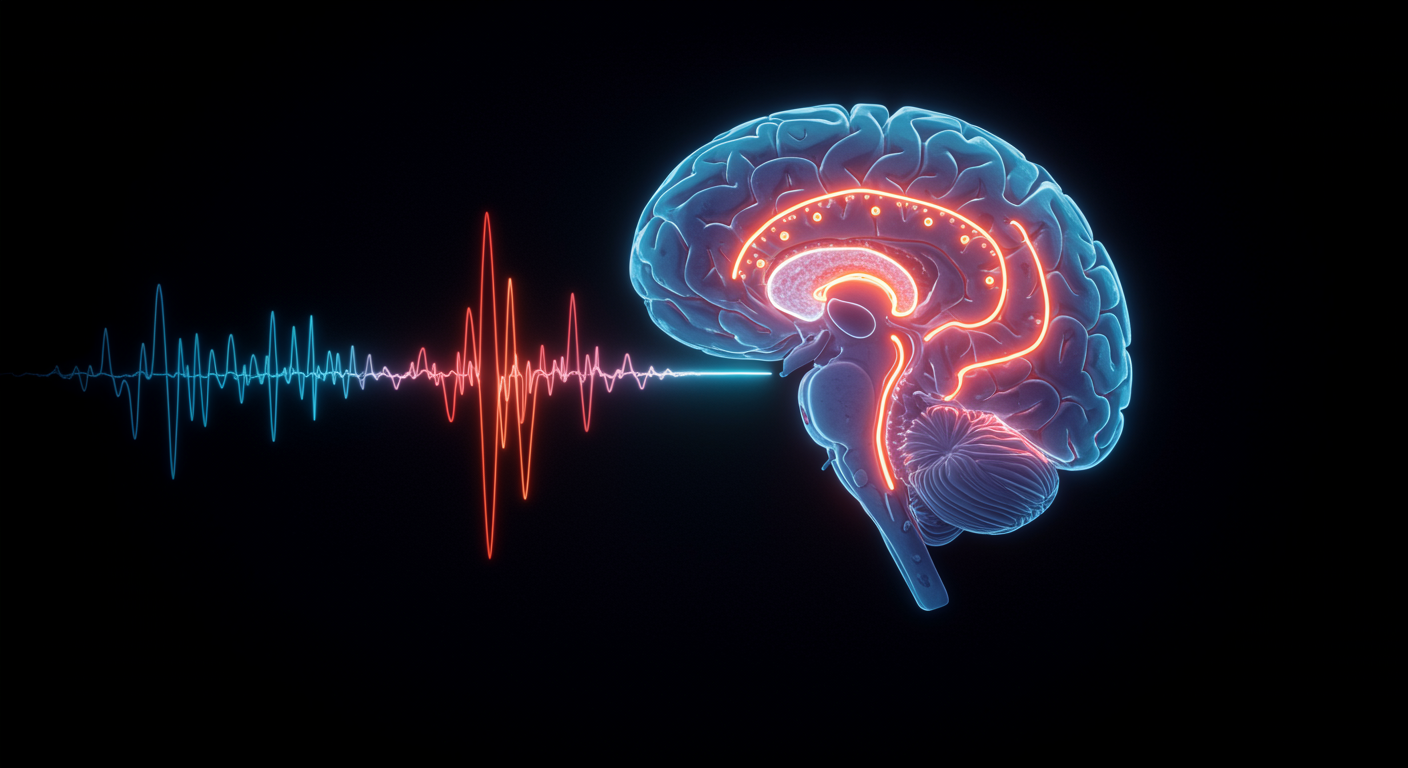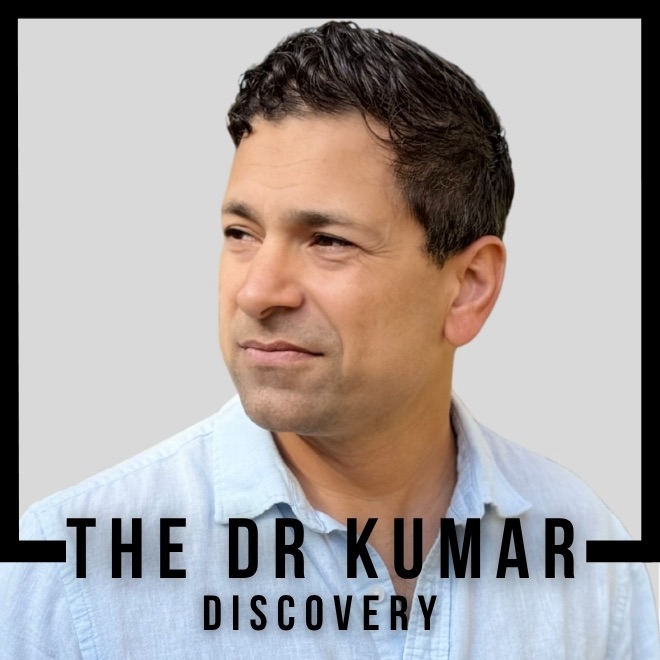What Controls Your Body’s Internal Clock and Sleep-Wake Cycle?
The suprachiasmatic nucleus (SCN), a tiny cluster of about 20,000 neurons in your brain’s hypothalamus, serves as your body’s master circadian clock. This landmark transplantation research definitively proved that the SCN determines circadian period by showing that when researchers transplanted SCN tissue from one animal to another, the recipient adopted the donor’s circadian rhythm pattern. This small but mighty brain region coordinates all biological rhythms throughout your body, from sleep-wake cycles to hormone release and body temperature fluctuations.
Dr. Kumar’s Take
This research fundamentally established our understanding of how biological clocks work and why circadian rhythms are so powerful. The fact that transplanting this tiny brain region can completely change an animal’s sleep-wake cycle demonstrates just how central the SCN is to our biology. Every cell in your body has its own molecular clock, but the SCN acts as the conductor of this biological orchestra, keeping everything synchronized. This explains why disrupting circadian rhythms—through shift work, jet lag, or irregular sleep schedules—can have such widespread effects on health. When you mess with your master clock, you’re disrupting the timing of virtually every biological process in your body. Understanding the SCN’s role helps us appreciate why maintaining consistent sleep-wake times isn’t just about feeling rested—it’s about keeping your entire physiology in sync.
Key Findings
The transplantation experiments involved removing the SCN from donor animals with known circadian periods and implanting the tissue into recipients whose own SCN had been lesioned (destroyed). Remarkably, the recipients adopted the circadian rhythm characteristics of the donor SCN, not their original patterns. Animals that had been arrhythmic (lacking normal circadian rhythms) after SCN lesions regained normal rhythmicity when transplanted with healthy SCN tissue.
The research showed that the SCN’s intrinsic period—whether an animal naturally has a 23.5-hour or 24.5-hour internal clock—is determined by the genetic and cellular properties of the SCN itself. This period remains stable even when the SCN is transplanted to a different animal, proving that the SCN is truly the master pacemaker.
Further studies revealed that the SCN coordinates circadian rhythms throughout the body by sending timing signals through neural connections and hormone release, particularly melatonin from the pineal gland.
Brief Summary
This landmark research used surgical transplantation techniques to examine the role of the suprachiasmatic nucleus in controlling circadian rhythms. Researchers performed SCN lesions to eliminate circadian rhythms in recipient animals, then transplanted SCN tissue from donor animals with known circadian characteristics. The studies tracked locomotor activity patterns, hormone cycles, and other circadian markers before and after transplantation to determine whether recipients adopted donor rhythm characteristics. The research provided definitive proof that the SCN serves as the body’s master circadian pacemaker.
Study Design
This experimental research used controlled animal models with precise surgical techniques to lesion and transplant SCN tissue. Circadian rhythms were monitored using continuous activity recording in controlled light-dark conditions, allowing researchers to measure the intrinsic circadian period of each animal. Transplantation procedures involved stereotactic surgery to place donor SCN tissue in the precise location of the recipient’s lesioned SCN. Long-term monitoring tracked whether transplanted animals regained normal circadian function and whether they adopted the donor’s rhythm characteristics.
Results You Can Use
SCN transplantation successfully restored circadian rhythms in animals that had lost them due to SCN lesions, with recipients adopting the circadian period characteristics of the donor tissue. This proved that the SCN contains the molecular machinery that generates circadian rhythms and that this timing information can be transferred between individuals. The research established that circadian period length is an intrinsic property of the SCN that remains stable across different environments.
The studies also revealed that the SCN coordinates body-wide circadian rhythms through multiple output pathways, including direct neural connections to other brain regions and indirect effects through hormone release. This explains how a small brain region can control the timing of diverse biological processes throughout the body.
The transplantation research provided the foundation for understanding how circadian disruption affects health and why maintaining consistent sleep-wake timing is crucial for optimal physiological function.
Why This Matters For Health And Performance
The SCN’s role as master circadian pacemaker explains why circadian rhythm disruption has such widespread health consequences. When the SCN’s timing signals are disrupted—by shift work, jet lag, or irregular sleep schedules—it affects the coordination of biological processes throughout the body. This can lead to metabolic dysfunction, immune system impairment, mood disorders, and increased disease risk. Understanding the SCN’s central role helps explain why maintaining consistent sleep-wake times, getting appropriate light exposure, and avoiding circadian disruption are fundamental to health. The research also provides insights into potential treatments for circadian rhythm disorders and the importance of chronotherapy—timing medical treatments to align with natural biological rhythms.
How to Apply These Findings in Daily Life
- Maintain consistent sleep-wake times: Regular schedules help keep your SCN synchronized and optimize circadian function
- Get bright light exposure in the morning: Light is the primary signal that synchronizes your SCN to the 24-hour day
- Avoid bright light before bedtime: Evening light exposure can disrupt SCN timing and delay sleep onset
- Be mindful of shift work effects: Irregular schedules can chronically disrupt SCN function and require special strategies
- Consider jet lag prevention: Gradual schedule adjustments can help minimize SCN disruption during travel
- Time meals appropriately: Eating patterns can influence circadian rhythms and should align with your natural sleep-wake cycle
Limitations To Keep In Mind
This research was conducted in animal models, and while the basic SCN function appears similar in humans, there may be species-specific differences in circadian regulation. The transplantation studies involved complete SCN replacement, which doesn’t reflect the more subtle circadian disruptions most people experience. Individual differences in circadian timing and light sensitivity mean that optimal strategies for maintaining circadian health may vary between people. Additionally, the complex interactions between the SCN and other biological systems continue to be studied and understood.
Related Studies And Internal Links
- Sleep Stages Explained: Your Nightly Journey Through REM and NREM Sleep
- Sleep’s Role in Emotional Brain Function: Mood Stability
- Overnight Therapy: How Sleep Processes Emotions and Heals Trauma
- Sleep: The Price of Plasticity - Brain Restoration
- How to Sleep Better: Science Daily Playbook
FAQs
Can the SCN be damaged in humans, and what happens if it is?
While rare, SCN damage in humans (from tumors, strokes, or other injuries) can cause severe circadian rhythm disorders, including complete loss of normal sleep-wake cycles. This demonstrates the SCN’s crucial role in human circadian function.
Is it possible to “reset” or repair a disrupted SCN?
While SCN transplantation isn’t possible in humans, the SCN can be resynchronized through appropriate light exposure, consistent sleep schedules, and sometimes medications like melatonin. The SCN has some plasticity and can adapt to new schedules with proper timing cues.
Why do some people seem to be natural “night owls” or “morning larks”?
Individual differences in SCN function, including genetic variations in clock genes and differences in light sensitivity, contribute to natural variations in circadian timing preferences. These differences are real and biologically based.
Conclusion
The suprachiasmatic nucleus serves as your brain’s master circadian clock, with transplantation research proving it determines biological rhythm patterns throughout the body. This tiny brain region coordinates all circadian functions, explaining why maintaining consistent sleep-wake timing and appropriate light exposure are fundamental to health and optimal physiological function.


